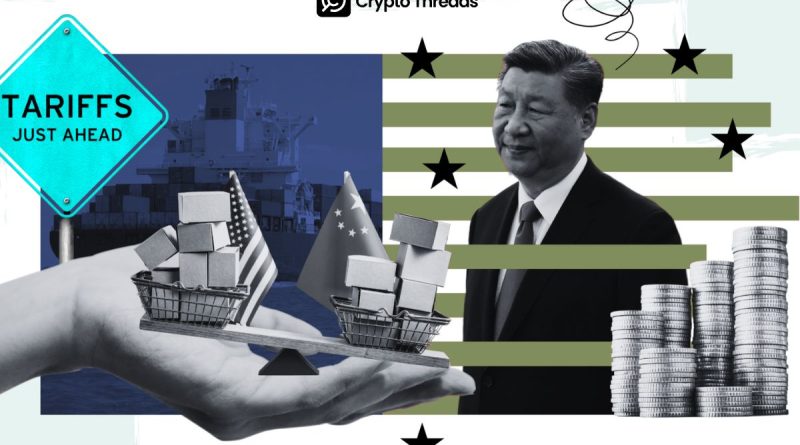Markets on Edge as U.S.-China Trade Deadline Nears
As tensions escalate between the United States and China, global markets are bracing for potential fallout if no trade agreement is reached by April 9. The looming deadline has intensified investor anxiety, leading to heightened volatility across major indices and raising concerns over broader economic stability.
Trump Reignites Tariff Threats
On April 7, former U.S. President Donald Trump renewed pressure on China, demanding that it roll back its recent 34% tariff increase on U.S. goods. If China fails to comply by April 8, Trump has vowed to impose an additional 50% tariff on Chinese imports, which would bring the total rate to 104%.
In response, Chinese officials issued a firm statement rejecting the U.S. ultimatum, signaling that Beijing is prepared to retaliate with its own set of countermeasures. The standoff raises fears of a full-scale trade war that could disrupt global supply chains and dampen economic growth.
Market Volatility Surges
Markets reacted swiftly to the uncertainty. The Dow Jones Industrial Average fell by 349 points (0.9%) on April 7, while the S&P 500 briefly dipped into bear market territory. Although the Nasdaq managed modest gains, volatility was evident across the board. According to The Kobeissi Letter, part of the turbulence was triggered by fake news regarding tariff delays, exacerbating existing investor nervousness.
Investor behavior continues to be shaped by a lingering “buy the dip” mindset—a strategy rooted in the belief that markets will rebound from temporary declines. However, analysts warn that this approach may prove risky if trade tensions escalate further without a resolution.
Deepening Market Risks
Deep Tide TechFlow reports that panic levels in market sentiment have reached extremes not seen since the COVID-induced crash of March 2020. With institutional and retail investors still deploying capital into equities despite the uncertainty, the risk of a sharp correction grows in the absence of a breakthrough in negotiations.
“If there is no agreement by April 9, we could see a sharp erosion in investor confidence,” said one analyst. “Panic-driven selling could return, especially as fears of recession and global economic contraction rise.”
Broader Economic Implications
Economists and business leaders are voicing concerns that an extended impasse between the U.S. and China could have far-reaching economic effects. The imposition of higher tariffs would likely increase costs for consumers and manufacturers, disrupt global trade flows, and further strain already fragile supply chains.
Financial institutions have begun issuing warnings about potential stagflation or even a recession if both sides fail to de-escalate. Critics of Trump’s hardline trade stance argue that the U.S. risks damaging its credibility with allies and reducing investor confidence at home and abroad.
What to Expect
With only hours remaining before the deadline, global attention is focused on Washington and Beijing. Market participants, policymakers, and multinational corporations are anxiously awaiting signs of compromise or confrontation. The outcome could shape the trajectory of international trade and financial markets for years to come.
Investors are advised to stay informed, diversify their portfolios, and prepare for continued volatility in the days ahead. The coming decisions will likely define the next phase of global economic policy and investor sentiment.



